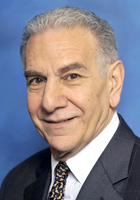
There’s a tenet in healthcare that runs deep: a patient’s relationship with his or her doctor is sacred.This core value is an important piece of one of the hottest topics in healthcare today: coordination of care.
As the nation grapples with the best way to create a more collaborative system that works for patients and is financially sustainable, our corner of the industry – long term care — is providing effective models and lessons. At the same time, we are working with government to break down barriers to what we believe can lead to significant growth for those effective, collaborative solutions.
I’m talking specifically about PACE, a managed care program that has served long term care patients for 25 years. PACE, the Program for the All-Inclusive Care for the Elderly, is a coordinated care model that improves both the patient’s health and Medicaid’s bottom line.
Focused on the most costly and complex individuals to care for – patients eligible for Medicare and Medicaid who are qualified to live in a nursing home, even if they don’t — the PACE model brings together nurses, physicians, social workers, therapists and other caregivers to create a coordinated care plan for each patient. The goal is to keep the patient healthy and at home while assisting with the activities of daily life, such as washing, dressing, eating and socializing. Reimbursement is provided under a capitated, managed care model.
The model is catching on, and PACE, we believe, is on the cusp of significant growth.
In the case of CenterLight Healthcare in New York, the nation’s largest PACE program, a key reason for this projected growth is a waiver issued by CMS. Most PACE programs require patients to see PACE-employed physicians and that discourages enrollment by seniors who want to stick with their doctors. The waiver breaks down that enrollment barrier by allowing patients to see their own doctor as part of their PACE care plan. Waivers have also been issued to a small number of other PACE programs and discussions have taken place in Washington about revising the rules on physicians for PACE programs nationwide.
For the patient and for our state’s Medicaid systems, the resulting growth in enrollment could have a huge impact. Figures from the New York State Department of Health show that, for 75% of the cost of permanently residing in a nursing home, CenterLight PACE programs can provide substantially more services while keeping patients safe at home.
The issue is particularly timely. The Wall Street Journal recently published an article on the quiet resurgence of managed care. At the same time, New York State is at the very beginning of a new mandate that all long term care patients enroll in a managed care program.
So, what if a new opportunity allowed PACE patients to use their current doctor and still take advantage of the coordinated care that serves them so well? Would we enter a realm where we can offer more patients the kind of care they need?
With managed care gaining prominence again as a solution to our nation’s healthcare crisis, our industry’s leaders have an opportunity to build on the results already demonstrated by PACE by growing that program and applying its lessons about coordinated care to other programs as well.
Stephan Deutsch, M.D., is Chief Medical Officer, CenterLight Healthcare, which sponsors the largest PACE program in the country. Contact him at sdeutsch [at] centerlight.org.



